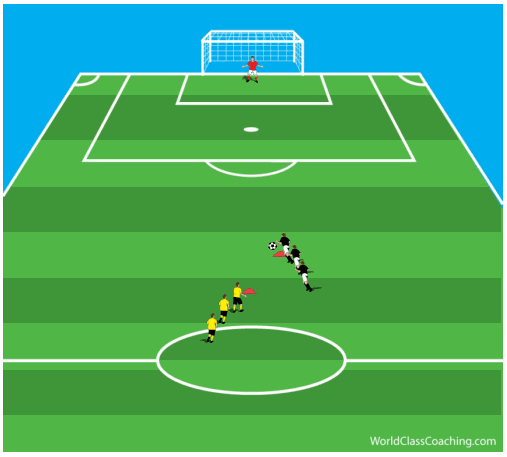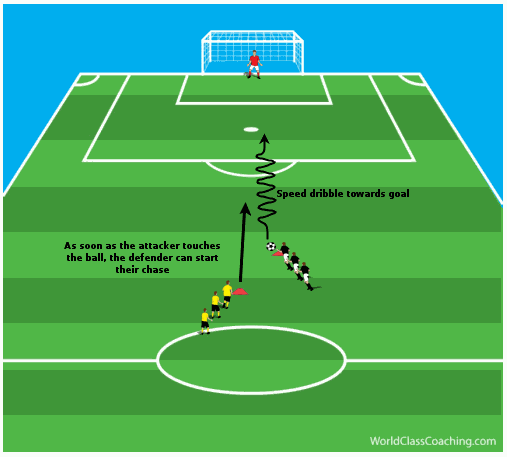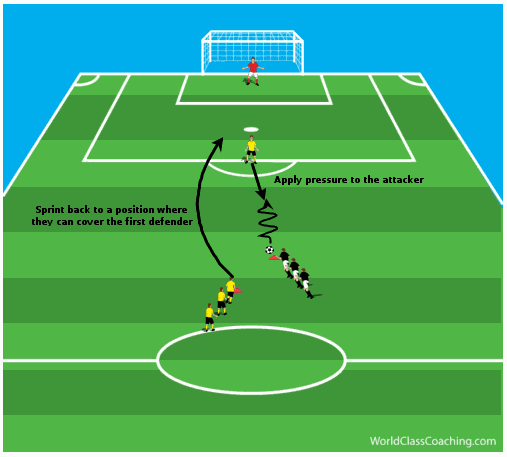By Jebreel Bubtana, BRASA, Brazilian Soccer Academy
This week’s exercise is designed to simulate a breakaway with a defender sprinting back to stop the attacker from scoring. This is a great exercise as not only does it work on the anaerobic fitness of the defenders but it is also a situation that the defender is very likely to face at some point during scrimmages or games. It is important to add an incentive for the defender in this exercise as they have to work very hard in this.
Set up and directions:
The attacker starts 40 yards away from goal with a ball and the defender starts 10 yards further back to the left or right of the attacker. You will also need someone in goal. The distances suggested can be modified depending on the ages of the players. For younger players, you can bring the distance in closer to goal and for older players you can push the starting point of the attacker to the halfway line, again with the defender starting 10 yards further back than the attacker (figure 1).
The exercise starts as soon as the attacker touches the ball. This is the cue for the defender to start chasing the attacker down and stop them from taking a shot on goal. The attacker's aim is to dribble towards goal as quickly as possible and try to score before the defender catches up to them (figure 2). As soon as one pair have finished, make sure the next pair are ready to go straight away to keep the intensity of this exercise high.
Progression:
To progress this exercise, you can put the recovering defender in a slightly different situation. The setup is now the same but with a defender that starts 20 yards away in front of the attacker. The role of the recovering defender is now not to pressure the attacker but to get into a position where they can cover the first defender who is going to apply pressure from the front. If the first defender gets beat then the recovering defender needs to be there to stop the attacker from scoring (figure 3).
Variations:
This exercise can be varied by starting the attacker and defender from different parts of the field. In the diagrams above, the attacker and defender start straight in front of goal but you can vary this and have them start from an angle and from different distances away from goal.
If you have the luxury of a full field you can set two of these exercises up to run at the same time. A good way to make sure that the defenders and attackers are working as hard as possible throughout is to split your squad into 2 teams (or 4 depending on if you can set this exercise up on another part of the field to run at the same time) and let both teams have a go as the attacker and defender. Keep score of the number of times the defenders stop the attackers from scoring during a set period of time. The recovering defender is the main focus of this exercise so I would reward the defenders by giving points for every time they stop the attackers from scoring. I would ignore the number of goals that the attackers score and keep encouraging the defenders to work hard.
Enjoy.
By Jebreel Bubtana, BRASA, Brazilian Soccer Academy, NSCAA Advanced National Diploma and the NSCAA Director of Coaching Diploma





